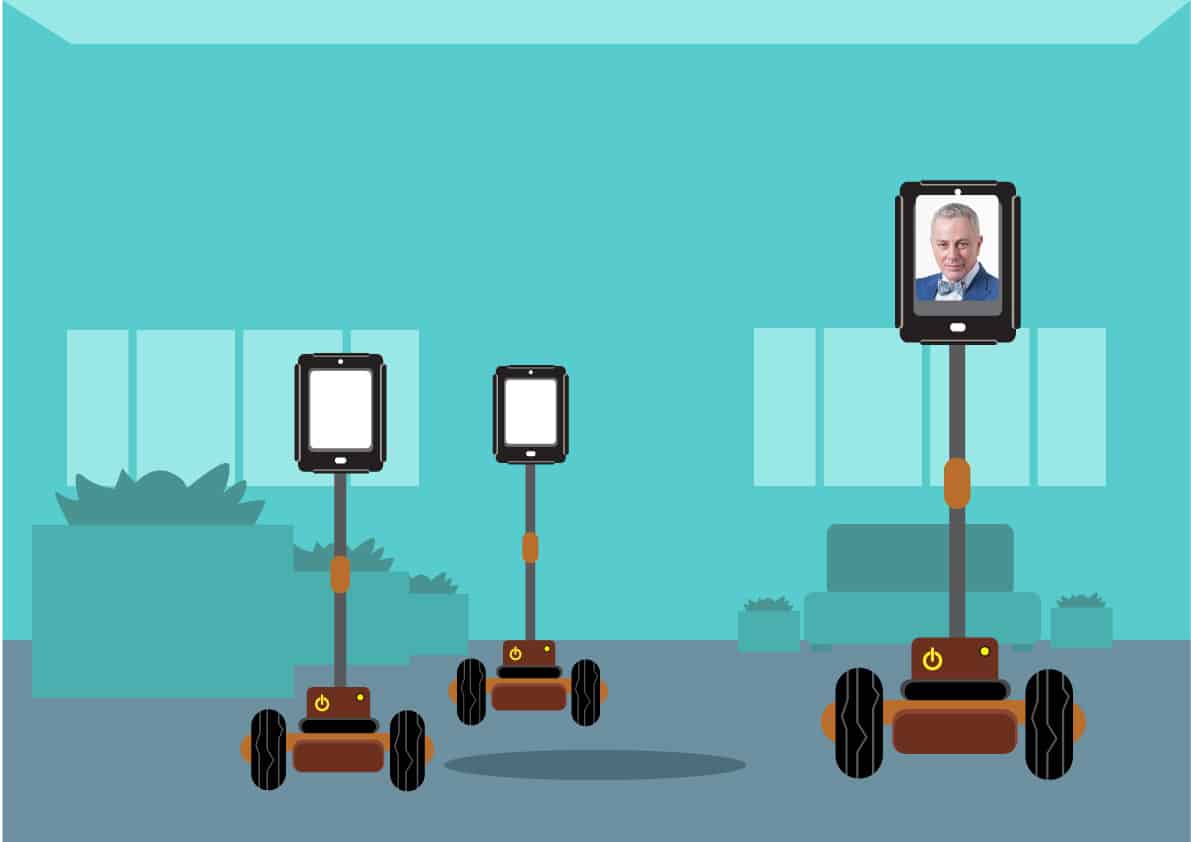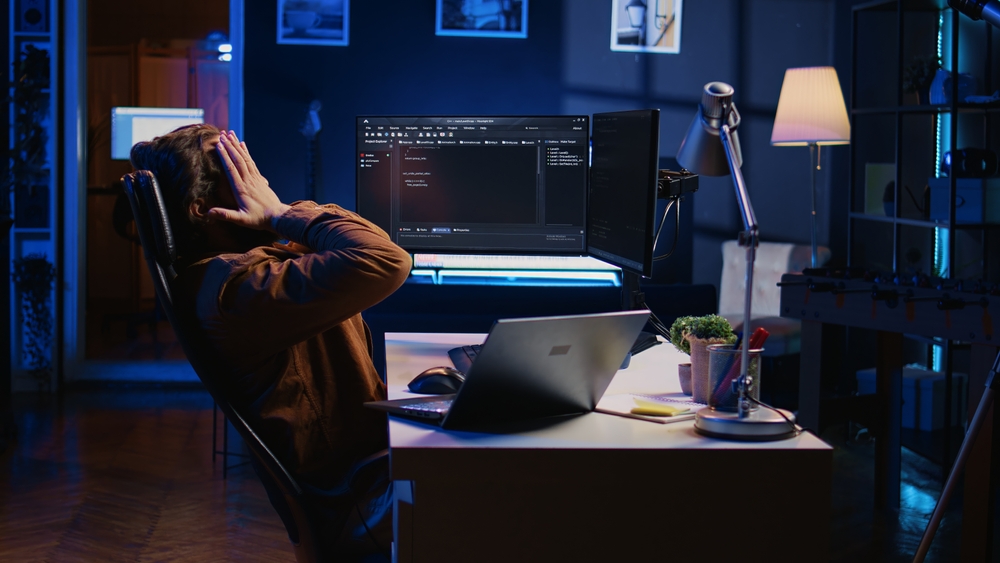Read Roffey Park CEO Dr Robert Coles’ interview to find out what Roffey Park is doing to ensure digital learning has the same results as if it was delivered face-to-face.
In March 2020 Roffey Park’s courses in leadership, management, resilience and coaching were all taught face-to-face. Overnight, that business model stopped working when Covid-19 stopped travel and social contact. In four months, the organisation transformed its use of technology in education to run its unique courses in everything from facilitation skills training and strategic leadership through to organisational development and coaching. “It’s Roffey Park, but on your laptop and in your kitchen,” jokes Chief Operating Officer Dr Robert Coles. He explains what you can expect from Roffey Park’s educational telepresence and digital learning.
How did Roffey Park start with digital learning?
“We already had a learning management system which we redesigned and restructured so it can support very large amounts of content and very complex programmes with very large groups over a period of time. “We use Zoom and Webex and various other technologies as a basis for actual classrooms and within those you can then set up breakout rooms and all the things you’d expect in a physical format. But most importantly our principles of facilitation – that our job is there to guide and promote and engage in ideas and work alongside people – have not changed at all. “Back in March and April we took the view that we were going to design something that was good enough for people to pay as they would do usually. It needed to enable them to share their fears, their experiences and their hopes, and to express their needs in terms of the help they wanted. They should also get some best practice input from Roffey Park facilitators in terms of things they could do or might be able to take on board in the here and now that they could apply immediately afterwards.
“So we had a three-phase approach of: listen to the group, let them listen to each other and get things off their chest. There was an awful lot of dumping of experiences, and we were allowing and encouraging that and saying this was their opportunity to say what you want to say about your experiences of being a manager or employer. We then began to engage with some of those themes with other members of the group in breakout sessions before coming back to have some best practice from us around some of those themes. We were also working out as a group what things we could start doing tomorrow that would stabilise us emotionally and help stabilise others that were working with and then start to make progress and energise activity within those teams.
“That was Navigator – the process was to stabilise the situation and emotions around the situation to energise by injecting skills and new ideas and new thinking and come up with those things collaboratively where we could and to revitalise teams as they come back together. We went at it with the same Roffey Park philosophy, that we want to connect everybody, to break down barriers for everybody to be heard and have a voice, and from that collective sharing and voice we wanted options and actions to emerge so people could take them away, work on them, and share with the people they work with.
“We priced it at £25 a head so an individual, a team leader or an organisation could book. All those things happened, and we had individuals from all over the world booking Stabiliser sessions and saying they wanted to talk about team working, virtual feedback, resilience and coaching, whatever. We had people from north America, Europe, Africa, Australia, Asia coming into these group sessions to share experiences and hear from people not just in other sectors but from other continents and to go away with some input from us and some group-generated things they could try out for themselves. It was very cool and very powerful and it worked very well.
“As it evolved we had organisations buying into the whole process, saying: we need to stabilise our teams, energise different kinds of activity, revitalise our thinking.
Individuals have booked on several personal stabiliser sessions because they found it useful. We’ve used our open forum, our debating and dialogue approach to the digital world, to enable inter-government or inter-civil service dialogues between countries as to how their civil administration is coping with crisis, who’s doing what, what’s worked and hasn’t, lessons learned, what do exit strategies look like?
We’ve also used our position as an educator of civil administrators around the world to connect very senior members of those civil administrations with each other and engage them in really energising dialogues about what has been done, what could have been done, what might be done in the future and the lessons we need to learn.
In terms of our own transformations I think we’ve discovered much to our own delight we can still be Roffey Park in this disrupted and digital world. Actually it’s essential that we are, because what we’ve been able to show in our own way is that the human centredness of things hasn’t gone away. For us that’s a renewal of our original purpose and certainly a renewal of our purpose today.”
Is it Roffey Park but in your kitchen?
“Totally. It’s Roffey Park sitting on your lap actually, if that’s not a step too far.
“What we are now about to experiment with is what’s known as telepresence robotics. We are going into educational telepresence.
Four months ago we didn’t do digital – we sat down in the famous Roffey Park circle and talked to each other. Now we’re now designing digital classrooms that will enable a totally different approach to digital learning.”
So what’s different about your use of technology and education?
“Typically in the digital classroom in a classic university there are massive screens on the wall and you might have 30 or 40 people in the room in a seminar and 40 or 50 in boxes on screens dotted around the wall. The feedback was that people on the screens were observing but not participating, kind of in and out at the same time.
“We are working with a Californian company which has designed tabletop robotics which hold a tablet into which you project your face. While you are sitting at home you have a virtual joystick and you can turn to talk to the person next to you in the classroom, look up at the screen, down to read notes or a shared file. You can be at the table with the people in the classroom at the same time as them having a chat. So we’ve found ways and technologies of enabling our dialogue and interactive approach to learning to be replicated even if you’re not in the room.”
At some point will there be a mixed economy where some people in the room and some are not?
“Absolutely. We are assuming that at some point because of Covid-19 social distancing that completely group-based classroom activities are effectively impossible so this is the way forward. We can use participative robots to enable you to sit at the table with the people in the room and do the work they are doing at the same time they are doing it. You are not just the face on the wall that has to butt in every so often – in our set up you’ll be at the table.
“The technical term is blended synchronous classrooms: that will be our model going forward. We see these as a blended mix of people physically and virtually but in such a way that the robotics enable them to have equal levels of interaction and equal levels of contribution. So I think we are right at the edge now in terms of innovation, in terms of thinking about and adding to the approach on workplace learning an either/or approach which has bedevilled the arguments about learning for donkey’s years.”
How does collaborative telepresence in education work in your experience?
“I’ve worked with an American partner institution which has been doing this experimentally for a few years. You kind of forget you’re outside the room because people turn to you and talk to you – or the robot version of you – in their room as though you are at the table, as though you are another person participating. We are intending to continue with this assumption that dialogue breaks down barriers, and breaking down barriers creates sustainability and resilience. That chain of thought is going to be wired through the way we do our learning from here and our assumption is that all learning has to be simultaneously digital and non-digital. That’s different to blended. We want it to be simultaneously happening at the same time, not in different formats at different times.”
So you can be doing your work in the virtual classroom and look up to glance at the person opposite with telepresence robots in education?
“Absolutely. The robot can pan and tilt the tablet face and you find yourself on the laptop turning yourself as you turn your robot, which is quite strange – you have to get out of that habit. But you can literally turn round and talk to the person next to you who otherwise you wouldn’t be able to see. In a recent experiment I was talking to someone in the US and she put a document down on the table and said take a look at this I was able to turn away from her, tilt the tablet down and look at the document at the same time which is just so cool.
“You’re effectively there and doing the work with them as you’re doing it so what we are trying to do is engineer different types of technologies so the principle of dialogue breaking down barriers, creating sustainability, and sustainability creating resilience continues. We want to continue to work on the basis that there’s a role for deep human dialogue using technology and it does work. They are not a contradiction, they can work with each other very well.”
When can we learn with the robots?
“We will be going live on the robots in September. A fair amount will be ready by then and we are redesigning absolutely everything we do to fit that multichannel approach to learning with that same fundamental approach to facilitation sitting underneath it and all of that will be done by December. That includes our Masters programmes which will be redesigned with those same assumptions in mind.”
How many courses will combine technology and education with some or all participants online?
“We’ve built some new courses specifically and are designing a lot with clients. I mentioned our 100+people seminars. Those were with a trade union body which wanted to offer programmes to their members and member unions. They and we expected groups of 15 to 20 but an average of 150 signed up for our first round of groups. There was a real hunger in this virtualised and isolated world of work for some genuine debating interaction, some genuine dialogue and sharing of perspective, sharing of context and building ideas and actions.”
This feels like you’re recasting learning and development strategy in modern organisations
“The way we’re doing digital learning is the way that everybody should be doing it. We’ve managed to prove to ourselves and our marketplace that the guiding principles that dialogue breaks down barriers, creates sustainability and creates resilience is eminently doable in a digital environment. Our use of and experimentation with telepresence robots I think is a big step towards breaking down what is often seen as an either or situation of digital or classroom when it can be both. We are taking a plus-plus view of how learning works in the future rather than an either or view of how things work so I think we are finding ourselves through experimentation and real agile learning right at the edge of thinking in practice about how corporate learning can remain social can remain personal can remain generative of ideas and be digital.”
So what’s coming in the future? How will you develop your educational telepresence and your teaching and learning strategies?
“Our future plan is to use digital avatars in the classroom as well as to have a 3D virtual classroom, so you become an avatar in a 3d classroom. We’ll have robots with generic shapes, and take out all the ethnicity, age and gender issues so that everyone is represented in the same way as a social equaliser. We’ll strip out the unnecessary who’s-the-boss stuff and then the avatars can interact in utopian equalness, enabling people to really say what they think and engage with topics. That will help us create highly dynamic dialogue environments which are totally digital.
“Certainly, a year from now I would see a lot of our global cohorts being run in virtual 3D classrooms with a bunch of avatars wandering round the room talking to people, doing breakout groups together, wandering off for a chat and a coffee and so on. We see that immersiveness as being incredibly powerful.
The technology exists – you’ve just got to get it all together.”





